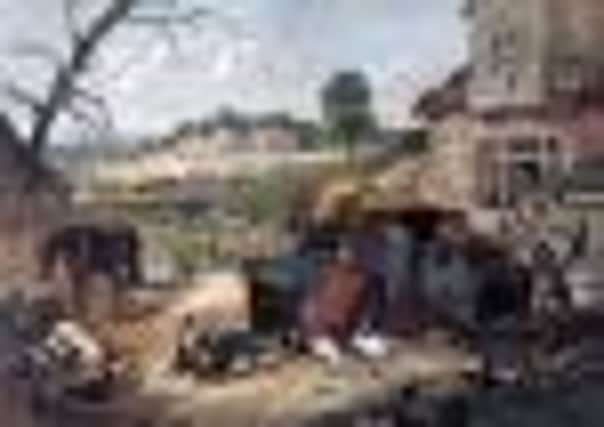Make tracks for images of fear and fascination at dawn of rail


I walk under the ground to Platform 3a as vast engines and carriages rumble overhead. I clamber on to a machine that whizzes me through the countryside in excess of a 100mph.
Advertisement
Hide AdAdvertisement
Hide AdI plunge through tunnels into the earth and out again near Grantham. In less than a couple of hours I’m in the nation’s capital and I’ve not really thought about it: I’ve been too busy reading my book and drinking my cup of tea. The magical has become commonplace and zooming up and down the country has become the norm.
A new exhibition at the National Railway Museum in York reminds us that travelling by train hasn’t always been this everyday. Fear and Fascination takes us to a time in the early 19th-century when the countryside was transformed to accommodate the railways.
Lines, bridges and tunnels were slicing into the landscape in ways that seemed impossibly futuristic and, for the first few years of the expansion, people were nervous of the rapid change from rural to urban as history seemed to speed up with each passing day.
Not only were the population worried about the changing environment, they were nervous of what train travel might do to their health; it was thought passengers might be unable to breathe or that their eyes would never recover from having to adjust to rattling from station to station. The exhibition is, according to Ellen Tait, interpretation developer at the NRM, equal parts fear and fascination.
Advertisement
Hide AdAdvertisement
Hide Ad“We’re asking the modern visitor to step out of themselves and imagine the reactions of people in the 19th-century to the rapid expansion of the railways,” she told me. “It was seen in many ways as something almost magical, almost supernatural as the amazing advances in technology took place over the whole country.”
And of course artists and illustrators are always the best people to capture society on the cusp of change, so in Fear and Fascination you’ll find wonderfully evocative images like Past and Present, a colour print from 1845 showing a derelict coach in a farmyard, colonised by hens and ducks and representing the horse-drawn past as a countryman watches a passing steam train; in the distance a brand new station gleams like an architect’s model. Cartoons like The Pleasures of the Rail-Road from 1831 show (in a humorous fashion, of course) the effects of a steam engine’s boiler exploding, an all-too common experience for the early traveller. There are also representations of astonishing feats of engineering, such as the prosaically titled Great Ventilation Shaft, Kilsby Tunnel, Northamptonshire 1837-38. Maybe we’ll see a similar exhibition in a few decades celebrating the construction of HS2 as it falters just south of Leeds. Maybe. Meanwhile, Fear and Fascination gives us a glimpse of a changing world that I’ll remember next time I’m running to Platform 3a.
Looking back with previously unseen artworks
Fear and Fascination includes prints, drawings, paintings and cartoons from the sublime Doric arch at Euston Station and what is thought to be the first drawing of a train by a child, to the faintly ridiculous image of a copper being run over by a steam train.
It draws from the museum’s previously unseen collection of prints, cartoons, drawings and paintings to demonstrate the polarised public attitudes to the railways in the 1800s.
The exhibition at the National Railway Museum in York runs from February 11 to May 13. 08448 153139, www.nrm.org.uk.